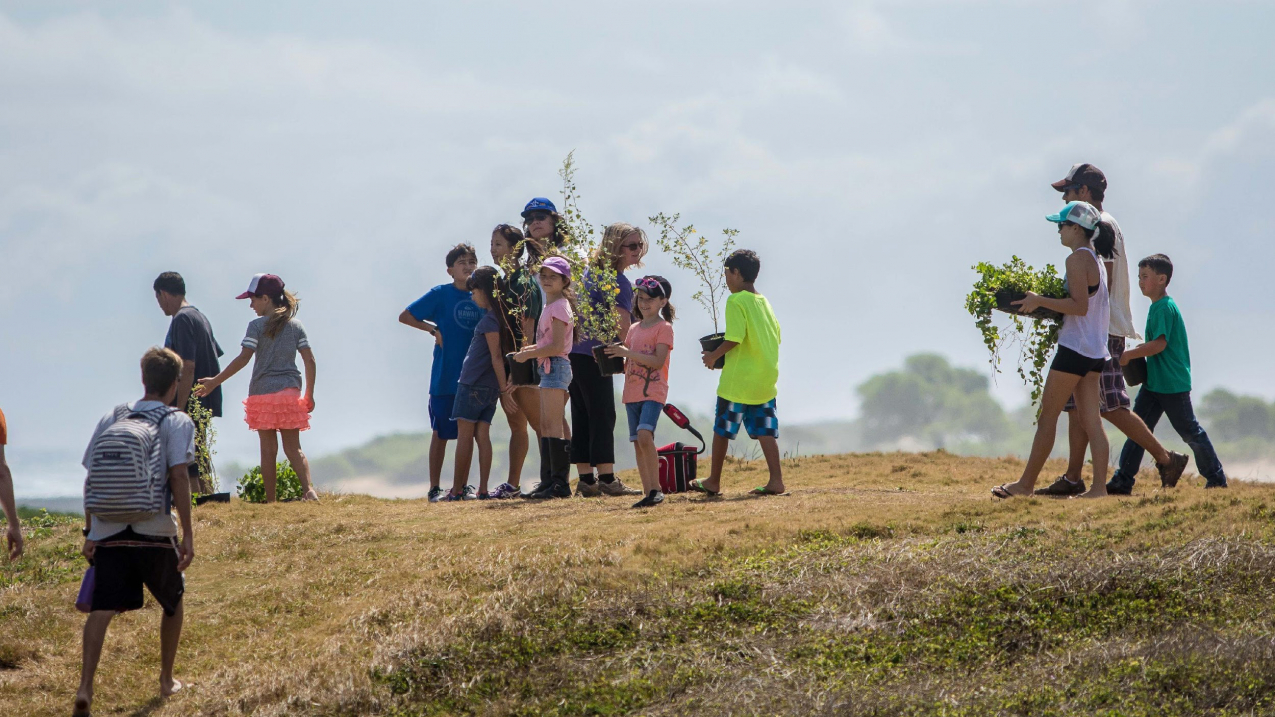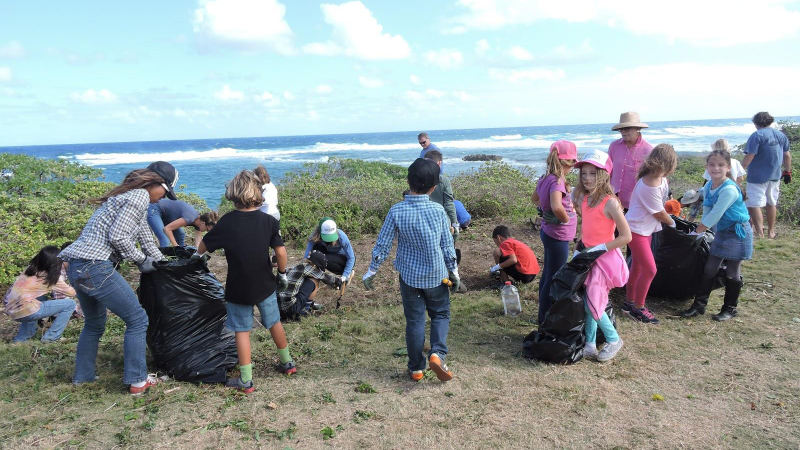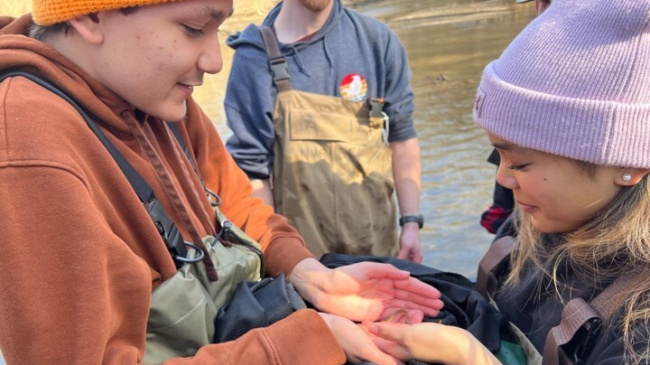NOAA’s Climate Stewards Education Project was created to increase educators’ understanding of climate science and to reach youth as the beginning of a long-term strategy to make communities more resilient to climate change impacts. Over 1,000 educators participate in an online community that connects them with webinars with experts, regional workshops, and educational resources. Recognizing that knowledge is best synthesized through real world problem solving, Climate Stewards also includes a stewardship project component funded through a competitive application process. Educators in the program learn climate science, communication strategies, and science teaching techniques as the basis for developing and implementing locally relevant stewardship projects with their students and communities.

Elementary educator Angela Huntemer-Sidrane, received funding from the Climate Stewardship Education Project for two school years to restore habitat on Kahuku Point. During the project, 45 third graders removed 110 square meters of invasive plants, planted 800 grass starters, and 500 native plants — including endangered species grown from seed specifically for the project. They also removed 110 kilos (243 pounds) of trash and marine debris. (Image credit: Courtesy of Angela Huntemer-Sidrane)
243 pounds of trash
were removed from Kahuku Point in Hawaii.
For example, in Hawaii, sea level rise and increased storm action from climate change will force animals and plants in coastal wetland habitats to move inland to survive. On the North Shore of Oahu, erosion and invasive plants make habitat inhospitable and are threatening nesting sites for migratory birds like the Laysan albatross. Elementary educator Angela Huntemer-Sidrane, received funding from the Climate Stewardship Education Project for two school years to restore habitat on Kahuku Point. During the project, 45 third graders removed 110 square meters of invasive plants, planted 800 grass starters, and 500 native plants — including endangered species grown from seed specifically for the project. They also removed 110 kilos (243 pounds) of trash and marine debris. The second year of the project will target 600 square meters of habitat, include past and current third graders, 100 fourth graders, and 200 10th and 12th grade students from local high schools. By the end of the year, each student will have spent at least 12 hours restoring Kahuku Point.

Since the program began, over 400 educators have joined the NOAA Climate Stewards stewardship community and engaged thousands of students and community members in their stewardship projects. In 2016, 21 educators received stewardship project funding from Climate Stewards, reaching nearly 5,500 students to mitigate or adapt to climate change.
This story was provided by the National Ocean Service, a member of the NOAA Education Council, as part of our ongoing effort to share education accomplishments from across NOAA.



